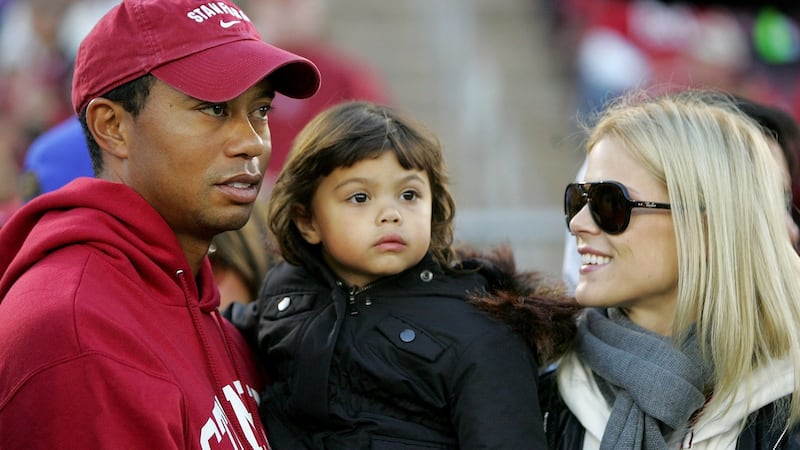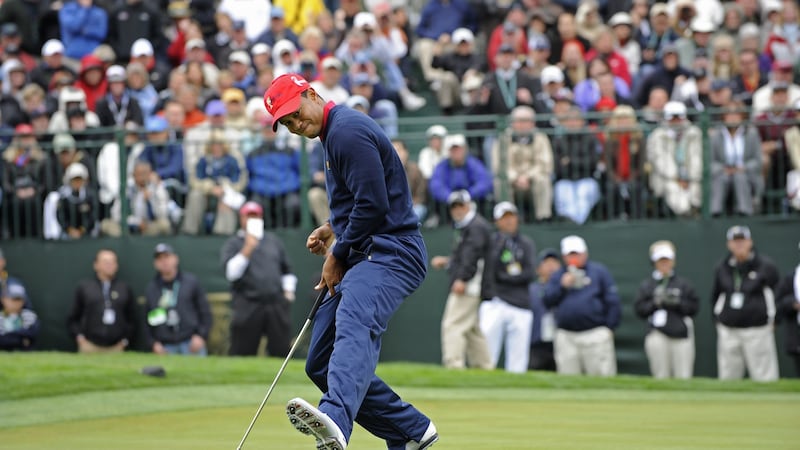Robert Lusetich was playing a round of golf at his home course in Los Angeles when his mobile phone pinged with a message. The text was from a friend, and the few words hit home like a punch to the stomach. Tiger Woods, in Florida, had been involved in a car accident. Of course, it proved to be more than that, as the incident on Thanksgiving night of 2009 would lead to a public scrutiny of the golfer's personal life that was more akin to a Hollywood movie than anything a scriptwriter could have conjured up.
For Lusetich, the news – and the revelations it subsequently brought with it – were like pieces of a jigsaw falling into place; for, as the house of Woods fell apart, the Australian, who’d spent much of the past year writing a book about the player, found sense from the carnage.
In the book, Unplayable: An Inside Account of Tiger’s Most Tumultuous Season, published by Simon & Schuster, Lusetich – a long-time bureau chief in LA for The Australian newspaper, who covered US presidential elections, incidents such as the Columbine shootings, the Oscars and sports, including Super Bowls, in that role – sought, and succeeded, in providing a measure of the global sports star.
What Lusetich could not have known when he first pitched the idea for a book on Woods was the twist that would emerge at year’s end.
"My intention was to write a book about 'who is Tiger Woods?' because, frankly, he had been a cardboard cutout. We didn't know anything really about him, other than what he and his handlers wanted to portray, the image they wanted to portray, the branding, marriage, kids, the People magazine spread, selling Buick, selling Nike, selling watches, the big smile. Look, all of that. I never thought to myself that's not true. I just thought there was more to any human being. Puddles were deeper than this image that had been created by his handlers and, very specifically, Nike did that and IMG and the rest of the people around him.
‘Blooming’
"They understood Michael Jordan was coming to an end, he wouldn't last forever, and they needed a new Michael Jordan, and Tiger was obviously blooming at the end of the '90s into the 2000s and he was their choice. I understood it all, but I also thought he was far more nuanced, far more interesting, and I was going to write this book. Now obviously the timing was incredible because his life unravelled in November of that year, 2009."
The idea for the book actually had its root in conversations Lusetich had with the late Dan Jenkins, the acclaimed journalist and author.
"He was a good friend. I always found him incredible dinner company and his agent was Esther Newberg, probably up there as the Tiger Woods of literary agents. He put me in touch with her. I wrote a treatment, and she started pitching it."

Over the years, I got to know him a little bit, as much as anybody can. He was very guarded about letting people in and I think we now know why
The timing for writing the book was good for Lusetich. Having spent some 15 years as bureau chief in LA for the Australian, the economic crisis of 2008 led to the newspaper closing a number of its foreign bureaus. LA was one of those closed. Not long after, Lusetich was appointed as a golf writer for Fox Sports, and his working life fitted neatly in with the book project.
Woods played 19 tournaments around the world (winning seven times) in 2009, and Lusetich was at every one of them.
Lusetich first came across Woods at the 1996 Masters. Woods was an amateur that year. "I recall Jack Nicklaus saying he'd just played a practice round with a guy who was going to win more green jackets than he and Arnie combined. I may not be a mathematics major, but I thought to myself, 'that's a lot.' I remember Tiger being this kind of shy young fella. Over the years, I got to know him a little bit, as much as anybody can. He was very guarded about letting people in and I think we now know why. He lived his life in compartments and I was in a box somewhere and he didn't want me in another box."
Steve Williams (Woods' caddie) was somewhat of the conduit. A Kiwi who loves his rugby and motor racing, he and Lusetich became friendly and would meet up at tournaments. "Tiger always knew I was writing the book [in 2009]. His agent, Mark Steinberg, was predictably hostile to the whole idea; and, again, I realised why he was so hostile at the end of the year when the scandal hit. He didn't want people digging into Tiger's private life."
Insights
Lusetich's plan for the book was to have each tournament provide the basis for a chapter. It wasn't to be a story of the tournament, but using each to provide insights into Woods. To get under the skin, so to speak. And he succeeded, for instance using the dawn showdown in a car park between Woods and old foe Phil Mickelson, complete with caddies Williams and Bones McKay, at the WGC-Accenture Matchplay in Tucson (where Woods returned to competition for the first time in almost nine months, following knee surgery after his US Open win at Torrey Pines in 2008) as an angle into deeper issues.
“At some point in the year I figured if he doesn’t like what I am doing I will know about it. He will find ways to let me know, but he never did, he was very gracious. I got as much or more time with him than anyone and I appreciated that. He was very candid too, not so much on the personal stuff but in terms of how he thought about golf, how he looked at golf.

Steve Williams gave me that title. He said when Tiger gets in a bad mood, those around him say he is unplayable. It was a real inside term amongst the Tiger camp
“I remember asking him one time, what would be your ultimate foursomes? That’s a golf question a lot of players get. He said it wouldn’t be a foursome, it would be a twosome and ‘it would be me and pops at Torrey Pines’. When he was a little kid he would always ask his dad, ‘I want to play Torrey Pines, dad,’ and Earl would say, ‘you are not good enough to play Torrey Pines,’ and it was always the carrot he would dangle. It was a huge incentive and then obviously the day came when he was 12 or 13 and the best junior in the world, and Earl couldn’t keep up the pretence, so they played, and it was always very special.”
Of course Lusetich’s writing of the book took a twist when the shenanigans of that Thanksgiving night turned into a scandal that rocked the sporting world.
‘Salacious’
“I had to make a decision about the nature of the book. I just didn’t want it to be a tabloid tell-all salacious book. My instinct and my reasoning for wanting to do it was to present a portrait of who is this guy, Tiger Woods, what is he about? Because nobody really knew. So what I couldn’t ignore was the nature of the story. Luckily for me my background was a as a foreign correspondent, a political journalist. I was a police reporter. I was a general reporter. I did a lot of things before I came to golf, even sport, so I had developed the skills to be able to report a story. Everyone was hiding under rocks but I managed to piece it together.
“The last chapter of the book, I needed to really tell the story of how this happened. I got a lot of sources that spoke to me on condition of anonymity and to this day I have not told who they were... the best way to do it was to say, ‘You can believe me or not believe me, but here is what I am going to report, half a dozen people who don’t want their names on this but you just have to trust me and this is what they told me.’ So I put the story together and the last chapter is about how it all came apart, how Tiger’s world imploded.”
The actual title of the book – Unplayable – was with Lusetich from an early stage. “Steve Williams in fact gave me that title. He said when Tiger goes off, gets in a bad mood, those around him tell each other he is unplayable. It was a real inside term amongst the Tiger camp of his mood. When he was in a foul mood you would know it and they would refer to it as unplayable.
“And unplayable, as we know, it has a golf connotation and other connotations. I toyed with the idea of Unplayable Lies, which is again a play on a golf term. But again I felt if I went with Unplayable Lies it would be tabloidy. I thought, ‘I am going to reveal all of those things about Tiger Woods, and again that is not the complete portrait...’ It needs to be a balance, which is what he is. He has all kinds of qualities, some good and some not so good, so that’s how I decided to do it.”












